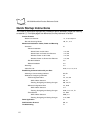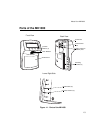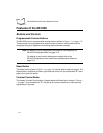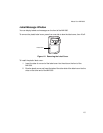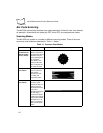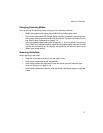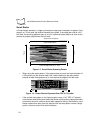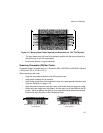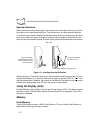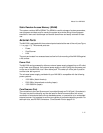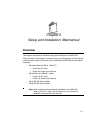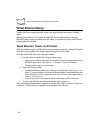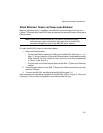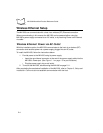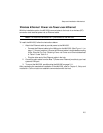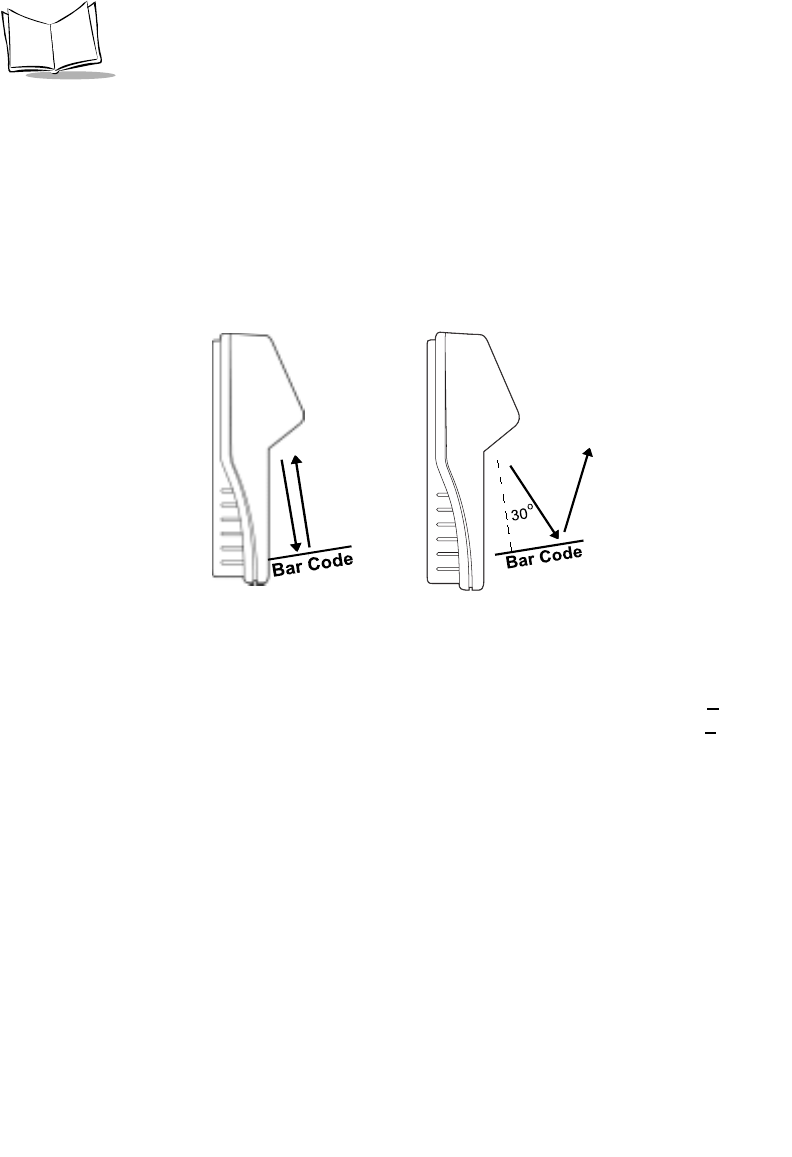
1-10
MK1000 MicroKiosk Product Reference Guide
Specular Reflection
When laser beams reflect directly back into the scanner from the bar code, they can “blind”
the scanner and make decoding difficult. This phenomenon is called specular reflection.
To avoid this, scan the bar code so that the beam does not bounce directly back. But don’t
scan at too oblique an angle; the scanner needs to collect scattered reflections from the
scan to make a successful decode. Practice quickly shows what tolerances to work within.
Figure 1-6. Avoiding Specular Reflection
When scanning a 1D bar code, there is only a small specular dead zone to avoid (+
2
o
from
the direct laser beam). The specular dead zone is larger for scanning PDF-417 (+
9
o
from
the direct laser beam). However, the scanner is not effective if its beams hit the bar code’s
surface at an angle greater than 30
o
from the normal to that surface.
Using the Display (LCD)
The MK1000 has a back lit 240 x 64 pixel Liquid Crystal Display (LCD). The display’s colors
are white on blue. The MK1000’s display can handle both text and graphics. The LCD’s
contrast is adjustable.
Memory
Flash Memory
The MK1000 system contains 1MB of Flash Memory. This non-volatile Flash Memory is
responsible for storing the system firmware.
No specular reflection.
Decode can occur.
Specular reflection.
Reflected beam is within
specular dead zone and
prevents decode.
Side Views
Tilt Bar Code At Slight Angle (Up to 30°)



